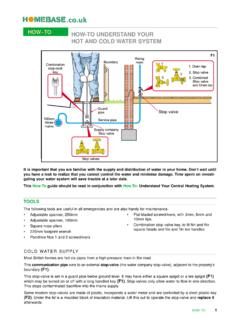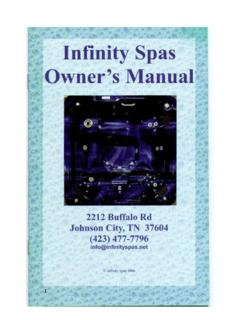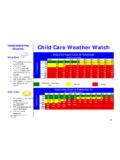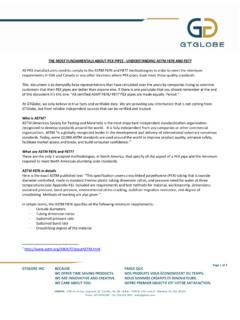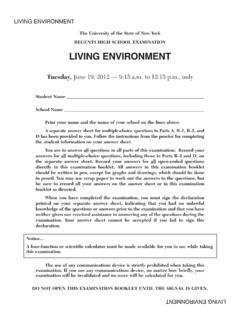Transcription of School Energy Audit - Count Down Your Carbon
1 1. The School Energy Audit : A Bright Idea How can you save the environment and save your School money at the same time? Just follow our simple and straightforward School Energy Audit , and you will be on the way to helping the environment, learning about climate change from a multiple disciplinary perspective, and improving your School . Through this process, you will discover exactly how your School uses Energy on a daily basis. The Audit will cost the School little or no money and, if acted upon, will likely save your School money on its Energy bill for this year and many years to come. The function of an Energy Audit is to expose different ways to affect Energy consumption and identify numerous options for reducing Energy consumption. The money your School saves will be available to fund important School projects, but just as important, Energy savings help the Earth by reducing resource use and environmental pollution.
2 By improving efficiency in places like our schools, we can get the same benefits while using less Energy . For example, substituting Energy efficient compact fluorescent light bulbs (CFL) for standard incandescent bulbs will save on average up to 6,000 megawatts of electricity each year. That is a savings equivalent to the annual Energy output of ten large coal-fired power plants or about seven average nuclear plants. Similarly, if every household in the replaced just one incandescent light bulb with a CFL, it would prevent enough pollution to equal removing one million cars from the road, about 1,000 pounds of pollution saved per bulb. This program will help you and you class conduct a School Energy Audit and present your findings in a report to others. To do this, you will need to: collect data about the Energy use of your School through auditing and accounting analyze the data from auditing and tracking Energy use through projects write a report on your findings and make recommendations about how to improve School Energy use present your findings and recommendations to School officials and try to get some of your recommendations adopted 2.
3 Beginning Exercise: As a class, list some factors that influence how your School uses Energy . 1. 2. 3. 4. Accounting Understanding your Bills Next, spend some time going over your School 's bills to see how it is billed for the resources it uses. Project Obtain data on the cost and use of Energy , water, and garbage services at your School . Equipment and Information needed: 1. School Resource Use Table (below). 2. School utility bills from the most recent year showing usage and cost 3. Information to understand how usage is converted to cost School Resource Use Table Month Electricity Cost $ Natural Gas Cost $ Fuel Oil Cost $ Water KWH Therms Gallons Gal $. JAN. FEB. MAR. APR. MAY. JUNE. 3. JULY. AUG. SEPT. OCT. NOV. DEC. Total Total Cost Lighting Audit Going renewable through wind, solar, geothermal, etc is a self-evident method for saving the planet while reducing your Energy output. If you can do it yourself or find an Energy supplier that provides one of the aforementioned resources, by all means pursue such an option.
4 However, not every School has the access or capacity to go renewable right now, much less implement even a solar water heater. Therefore, the reformation of your School 's lighting system is one method that any School can do to drastically and easily conserve Energy . Lighting your School takes Energy and money, but so does the maintenance of the lighting system. As the chart below shows, incandescent bulbs have to be replaced more often than fluorescent ones, leading to longer maintenance hours spent on lighting. Performance Characteristics of Various Light Sources Lamp Type Efficacy (Lumens/Watt) Average Life (Hours). Standard Incandescent 5-20 750-1000. Tungsten-Halogen 15-25 2000-4000. Compact Fluorescent (5-26 watts) 20-55 10,000. Compact Fluorescent (27-40 watts) 50-80 15,000-20,000. 4. Problem: You are about to buy a light bulb for $ that has a rated life of 850 hours. You then notice that you can buy a bulb that produces the same light for 18,000 hours, but costs $ Energy use is the same for each bulb.
5 Which bulb is the better bargain? _____ The $ bulb_____ The $ bulb *Hint: you will have to buy about 21 bulbs with a life of 850 hours to get 18,000 hours of service (21 X 850 = 17,850 hours). Those 21 bulbs will cost you approximately $ ! Project Do a Lighting Inventory for your School and complete the Room Lighting Checklist below. Equipment needed: 1. Tape Measure 2. Light meter 3. School Room Locator 4. Lighting Survey Form (below). Procedure: 1. Determine lamp type for room 2. Take Light Level Readings (Foot-candles). 3. Record number of light bulbs and their wattage 4. Record how lights are controlled 5. Record number of tubes per fixture (Luminare). Write a report analyzing how well your School performs relative to existing lighting standards in your area. Room Lighting Checklist Room Room Incandescent Fluorescent High Foot Comments(4). Number Use(1) Bulbs Lamps Intensity Candles(3). Watts(2) Watts(2) Discharge and Wattage(2).
6 5. 1. Room use: List primary activity such as science, office, art, etc. 2. Bulb Count / Watts: Identify the type and number of bulbs and their wattage. If applicable, include ballast type and wattage. 3. Foot Candles: The reading obtained from the light meter at a set location. 4. Comments: Does the room have windows and/or skylights? Are the reflectors dirty? Is the ceiling reflective? Water Audit There are many ways you can help your School save money on water usage, such as checking for leaks in the system, reducing water usage (especially hot water), and improving the efficiency of water delivery. Problem: Measuring Flowrates Use a one gallon container in the School gym showers or a sink to determine the flow rate in gallons per minute. To measure the flow rate, turn on both the hot and cold water and adjust the temperature of the water and the flow to the temperature at which you would normally shower or wash your hands.
7 Note the time on a watch (with a second hand) and fill the one gallon bucket, recording how much time it takes to fill in seconds. 1 gallon shower/sink water = _____ seconds. Divide this number by one and multiply the result by 60 to get gallons per minute =. _____GPM. Now turn off the cold water and find out how long it takes to fill the one gallon container with hot water. 1 gallon hot water = _____ seconds. Again divide this number by one and multiply the result by 60 to get gallons hot water per minute = _____GPM. 6. *Low-flow showerheads are available that provide hot showers and use only GPM or less. If your flow rate is in excess of GPM, Energy can be saved by changing the shower heads. The same is true for automatic sink sensors, which appropriate and conserve sink water and reduce cost over a greater period of time. Project Find the following information about your School : 1. Amount of hot water (gallons) used per month (record on table below).
8 2. Amount of electricity (KWH) or natural gas (Therms) used per month to heat water 3. GPM (flow rate of School showers/sinks in gallons per minute). 4. Volume of water used in cubic feet per minute 5. Energy cost per cubic foot* and per gallon 6. Number of calories* of Energy needed to heat water per gallon and per liter (Note: Liters = 1 gallon). *One cubic foot equals gal *One calorie equals the amount of Energy necessary to heat 1 gram of water 1. degree Centigrade. 1 gram of water is equal to a milliliter. Calculate the amount of Energy used to heat water at your School : Equipment needed: 1. Thermometer 2. One gallon container 3. One liter flask Information you will need: Total amount of hot water used per month (cubic feet). Type of Energy used to heat water (fuel, natural gas, electricity). 1. Measure the temperature of both cold and hot tap water using a thermometer that measures in Celsius, then find the difference between the two.
9 2. How many calories does it take to heat a liter of water at your School ? 3. How many calories does it take to heat a gallon of water? 4. How many calories does it take to heat a cubic foot of water? (There are gallons per cubic foot). 7. 5. How many calories does it take to heat the water your School uses each month? (About one third of the total water used is heated). Convert Total Calories (#4) to: 6. Kilowatt Hours _____. 7. Calculate the cost of meeting the hot water needs at your School per month using a gas water heater and an electric water heater. 8. Record your conclusions regarding water heater efficiency, system efficiency, and rates. True or False: If incoming water is preheated by running through solar panels, it will take less Energy to heat the water and will save money. ___T ___F Why or why not? (Answer is True, since over a given period of time, heating is on-site (cheaper) and the only related costs are for maintenance, with sell back options being a perk.)
10 Write a report presenting your findings relating to water use in the School . School Hot Water Use Month Cubic Feet (CF) Gallons (Gal) Liters (L) Energy Dollars ($). JAN. FEB. MAR. APR. MAY. JUNE. JULY. AUGUST. SEPTEMBER. OCTOBER. NOVEMBER. DECEMBER. Totals 8. Food Services Audit In the Kitchen In some areas you will pay more for the electricity used by some refrigerator models during their lifetimes than you originally paid for the refrigerator. Alternatively, more efficient models ( Energy star appliances) are available and could be more cost effective than the equipment at your School . Pilot lights use as much as 30% of all the gas a range uses, so turn them off over breaks or long hours of non-operation. Problem: In an experiment, cooking the same recipes in the same kitchen with the same utensils, some cooks can use half as much Energy as others. How? Answer: a. Using pots about the same diameter as the burner b.
